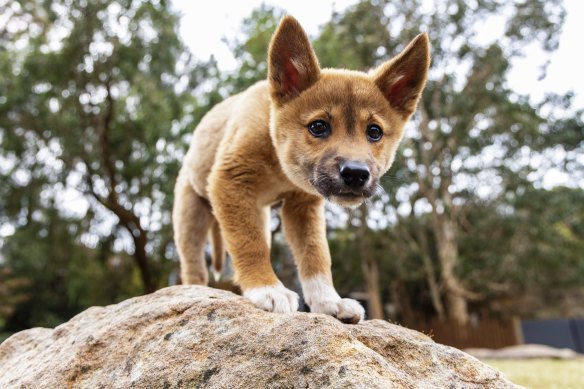
Think of the dingo as the dark horse of the animal kingdom. Not only does it have a long-standing connection to the land, but it also faces numerous challenges that threaten its existence. As we delve into their status, it’s essential to understand the various factors contributing to the dingo’s situation. So, let’s take a closer look at the dingo, the threats they face, and what’s being done to protect them.
Understanding the Dingo’s Role in Australia’s Ecosystem
The dingo is more than just a wild dog; it’s a crucial part of Australia’s biodiversity. These animals have been roaming the land for thousands of years. They are natural predators and help control populations of various species, including kangaroos and rabbits. You might think of them as nature’s balance keepers. Without predators like dingoes, certain animal populations could explode, leading to overgrazing and habitat destruction.
Interestingly, research shows that dingoes have a unique hunting style. They often work in pairs or packs, using teamwork to take down prey. This behavior helps maintain the health of their prey populations, preventing any single species from dominating. So, when we talk about the dingo’s conservation, we’re not just thinking about saving a species; we’re considering the health of the entire ecosystem.
However, dingoes face many challenges, particularly from human activities. Urbanization, farming, and habitat destruction greatly impact their populations. As we move forward, understanding these complexities is essential for effective conservation strategies.
The Threats Facing Dingoes Today
The dingo’s situation is precarious, and several factors contribute to its endangered status. One of the biggest threats is habitat loss. As humans expand into rural areas, they often encroach upon dingo territories. This makes it difficult for them to find food and mates. Picture a dingo trying to navigate through a maze of houses and roads—pretty tough, right?
In addition to habitat loss, dingoes are often seen as a threat to livestock. Farmers sometimes take drastic measures to protect their animals, which can result in dingoes being hunted or trapped. This mindset creates a dangerous cycle: as dingoes are killed, their natural prey, like rabbits and kangaroos, can increase in number, leading to more human-animal conflicts.
Another challenge comes from interbreeding with domestic dogs. As dingoes and domesticated dogs breed, the genetic distinctiveness of the dingo diminishes, threatening their existence as a unique subspecies. Conservationists are working to combat this by promoting awareness and creating guidelines for responsible pet ownership in areas where dingoes are present.
Current Conservation Efforts for Dingoes
Conservationists and wildlife organizations are working hard to protect dingoes and their habitats. One approach involves creating wildlife corridors or protected areas that allow dingoes to roam freely without the threat of human encroachment. Imagine a highway just for dingoes—where they can travel safely and find mates.
Another effective strategy is community engagement. Local populations are educated on the importance of dingoes to the ecosystem. By involving communities in conservation efforts, there’s a greater chance of fostering a positive relationship between humans and dingoes. When people understand the role dingoes play in controlling other animal populations, they might be less inclined to see them as pests.
Moreover, some programs aim to track dingo populations using advanced technologies, like GPS collars. This data helps researchers understand their movements, breeding patterns, and health. It’s like putting a fitness tracker on a dingo—providing valuable insights into how they move and live.
What You Can Do to Help Dingoes
You might be wondering how you can contribute to the conservation of dingoes, even if you’re far removed from Australia. There are several ways you can help:
- Support Wildlife Organizations: Donate to or volunteer with organizations dedicated to wildlife conservation, especially those focusing on the dingo.
- Spread Awareness: Share information about dingoes and their importance in ecosystems. The more people know, the more support there will be.
- Responsible Pet Ownership: If you have dogs, make sure to keep them contained and prevent them from roaming freely in dingo habitats. This helps reduce the risk of interbreeding.
- Eco-Tourism: If you ever travel to Australia, consider participating in eco-tours that promote wildlife conservation, including the dingo.
Every small effort counts! Remember, the survival of the dingo may depend on collective action and understanding from people worldwide.
The Future of Dingoes: What Lies Ahead?
The future of dingoes hangs in the balance. With ongoing conservation efforts and increasing awareness, there’s hope for these incredible animals. However, for them to thrive, it will take a concerted effort from governments, communities, and individuals.
As problems such as habitat destruction and human-wildlife conflict continue, it’s essential to keep advocating for smarter land use and conservation policies. Honestly, maintaining biodiversity isn’t just about saving one species—it’s about ensuring a healthy planet for generations to come.
Protecting dingoes also means respecting the traditional knowledge of Indigenous Australians, who have coexisted with these animals for millennia. Their insights can help shape effective conservation strategies that are culturally relevant and sustainable.
So, is the dingo endangered? Yes, they face significant threats, but it’s a situation that can change. With community involvement, smarter policies, and a deeper understanding of their role in the ecosystem, we can work to secure a brighter future for dingoes.
Remember, every action counts. Whether you’re in Australia or across the globe, your support can make a difference. By fostering a connection with and appreciation for these wild dogs, we embrace the rich biodiversity of our planet. Let’s work together to ensure that dingoes continue to roam the Australian wilds for years to come.
